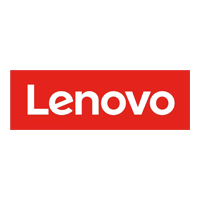

A thin client is a stripped-down, simplified computer that connects to a remote server (cloud, edge, or on-premises) to run a virtual desktop, using the servers´ resources. These devices are heavily used by government agencies, business employees, IT companies, healthcare, manufacturing, retail, and public areas such as libraries.
The benefits of thin clients include reduced hardware and software cost, improved security (since nothing is stored in thin clients), centralized management, and system integrity, as the OS, files, settings, and software cannot be changed.
To understand how thin clients work, three major core areas need to be considered: hardware, network, and software.
A key characteristic of thin clients is their minimal hardware requirements. Most of the hardware resources that a thin client uses are not inside the device but in the server. This server can be installed on-premises, be a close edge-data center (good for operations that require low latency), or be provided by a cloud vendor.
A thin client draws its memory, processors, and storage from the server it’s connected to. However, to operate it still requires:
Connectivity is essential for thin clients to operate, since they run on network-connected servers.
To connect to the architecture — the main server hosting multiple thin clients as endpoints — thin clients use the following protocols:
Other protocols, such as Virtual Network Computing (VNC) protocol and the Simple Network Management Protocol (SNMP), can also be used to connect a thin client to a server but are not as popular as RDP and ICA.
Additionally, top vendors will offer support and special apps for thin client users to connect to servers. For example, Citrix Virtual Apps, VMware Horizon, Amazon Web Services (AWS), and Microsoft Azure all provide thin client network connectivity applications. These vendors usually use the RDP or ICA protocols.
While thin clients can run a simplified, read-only OS — usually from external storage devices such as USB or flash memory cards — the rise of cloud computing, virtual machines (VMs), and virtualization have established virtual desktops as the most popular way to run an OS on a thin client.
However, a thin client still needs some basic software to connect to a network and its server host and to run virtual desktops. This software is known as a thin client operating system (TCOS).
A TCOS is a lightweight operating system that is typically a basic version of a traditional desktop operating system, such as Windows, Mac, or Linux.
TCOS software includes:
Virtual desktops (the virtual image of an OS running on a VM in the host server) provide the OS, the apps and software, advanced security, and all the hardware requirements for thin clients to operate smoothly and safely.
From cost and space savings to scalability, security, and sustainability, there are many benefits to thin clients.
Despite the many benefits that thin clients provide, they still have some drawbacks, including network limitations, IT requirements, and reduced performance.
There are several common use case sectors and scenarios ideal for thin client architecture deployment, such as hybrid workplaces, healthcare, retail, manufacturing, and kiosks.
Thin clients can be useful for companies that want to centralize their IT management and provide their employees with the means to access virtual desktops, use thin clients to cut down costs, increase control and security, and ensure compliance and privacy.
Using thin clients, organizations can scale, provide equipment resistant to heavy use, reduce maintenance, and build flexible hybrid work environments.
From patient check-ins to nurse stations, doctors’ offices, clinic rooms, and telemedicine, healthcare is one of the biggest users of thin clients. Thin clients provide health professionals with the digital resources they need even as they move from one sector to the other.
The centralization of information also allows for instant updates, a single source of truth, and centralized management, which is vital for healthcare.
Thin clients can also help healthcare providers conform to strong compliance demands set by laws such as HIPAA.
Retail, factories, and manufacturing environments can be hostile to technology. The rugged characteristics of thin clients serve these sectors well. Additionally, using edge-cloud infrastructure, thin clients can reduce latency and streamline operations.
Thin clients are also used for point of sale (POS) systems. They can process payments and track inventory and are employed by retail stores, restaurants, and other businesses.
Thin clients are often used for kiosks. This means that the thin client is used to provide a specific service, such as checking out library books or ordering food. Kiosks are typically used in public areas, such as libraries, airports, and retail stores.
The education sector leverages the benefits of thin clients, which are durable and can be used over and over without worrying about changes to software or costly maintenance. In this sector, they provide access to educational resources, online courses, and libraries, as well as student, faculty, administrative, and learning management systems.
Confusion often arises between thin clients and thick clients, also known as fat clients. The table below explains the main characteristics of each.
| Thin client | Thick client | |
|---|---|---|
| Hardware | Low-powered processor, limited storage, small display. | High-powered processor, large storage, large display. |
| OS | Lightweight thin client operating system. | Full-featured operating system. |
| Apps | Runs applications that are stored on a central server. | Runs applications that are stored locally. |
| Security | More secure due to centralized data storage. | Less secure. Data stored locally. |
| Cost | Cost-effective, inexpensive. | More expensive. |
| Use cases | Kiosks, POS, remote access, desktop virtualization. | General-purpose computing. |
| Performance | Depends on server and network. | Runs processes locally. May perform better than thin clients. |
| Network dependency | Depends on connectivity to the server and its OS. | Does not need connectivity. Built-in OS, can operate independently. |
| User changes | End user cannot make changes to the OS, save files, or change settings. | Users can save files, change settings and OS, and make permanent modifications. |
| Connects to virtualized environment | Yes. | Yes. |
There are numerous vendors, including top cloud providers, that offer excellent thin client products and services.

HP is a leading manufacturer of thin clients. Their thin clients are known for their reliability and performance. They are popular among businesses with hybrid work policies and are optimized for simplified deployment and centralized management of complex environments. HP thin clients models include the t740, Elite t655, and the t640.

Dell is another leader in the thin client market. Their products are secure, reliable, and cost-effective. The Wyse thin client is used by enterprises that want to accelerate cloud strategies.

NComputing is a manufacturer of thin clients that are designed for businesses with limited budgets. Their thin clients are very affordable and easy to deploy. The most popular product is the RX300. The RX300 is cloud-ready, optimized for NComputing’s vSpace Pro desktop virtualizations and Microsoft Remote Desktop Services.

IGEL thin client products are more expensive than those offered by NComputing but preferred by companies that require high-security standards. Their thin client products offer a wide range of security features, such as remote management and data encryption.

Lenovo thin clients are popular among IT, offices, healthcare, factory floors, public libraries, and retail and manufacturing. The company offers several products, including the M Series ThinkCentre and the ThinkCentre M75n IoT Thin Client Desktop. They are powerful, ultra-light and thin, easy to set up, power efficient and military-grade tested for durability and reliability.
Thin clients leverage different technology ranging from hardware, software, network, VMs, cloud, edge, and virtual desktops to provide several benefits for large, medium, and small operations.
Thin clients reduce costs, increase access and the availability of resources, and enhance privacy and security. They are ideal for sectors that require intense use and can provide low latency for sectors such as retail and manufacturing.
Here are some of the best server virtualization software to help you establish a robust virtualization environment for your thin clients.


Ray is a Content and Communications Specialist with more than 15 years of experience. He currently works at Publicize and as a contributing writer for TechRepublic, eSecurityPlanet, and Enterprise Networking Planet in addition to ServerWatch. His work has also been published in Microsoft, Venture Beat, Forbes, Entrepreneur, The Sunday Mail, FinTech Times, Spiceworks, Dice Insights, Horasis, the Nature Conservancy, and other leading publications.
Property of TechnologyAdvice. © 2025 TechnologyAdvice. All Rights Reserved
Advertiser Disclosure: Some of the products that appear on this site are from companies from which TechnologyAdvice receives compensation. This compensation may impact how and where products appear on this site including, for example, the order in which they appear. TechnologyAdvice does not include all companies or all types of products available in the marketplace.